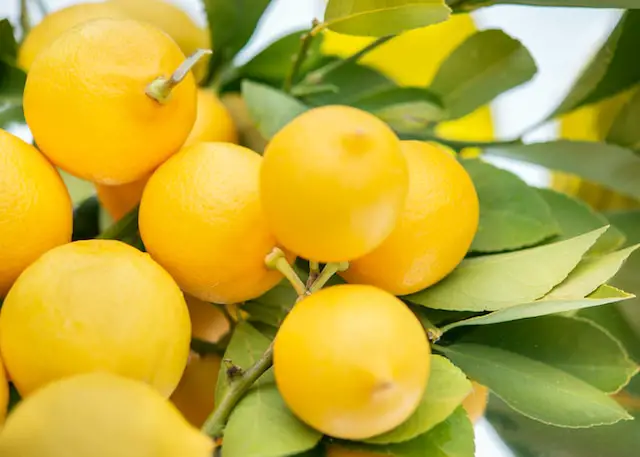
We may receive commissions from purchases made through links in this post, at no additional cost to you.
Growing any fruit tree is a big commitment. When you plant a tree, you’re dedicating not only yard or patio space, but your own time, effort, and money in the hopes that it will provide some fruit.
Lemon trees are relatively easy to care for, but there are a few tricks to ensure that you get the biggest harvest possible from your tree. It’s extremely frustrating to wait all year for the fruit to develop, only to harvest a few lemons that won’t even be enough for a pitcher of lemonade.
Lemon trees will grow more fruit with proper pruning, fertilization, watering, and protection from pests, diseases, and weather stress. Choose high-yielding lemon varieties, and ensure that the blossoms are pollinated, either by hand or planting bee-attracting companions nearby.
With the tips in this article, I’ll show you how to maximize your lemon tree harvest, whether you have one tree or a whole Fruit Grove. A few small tweaks in care will make a big difference to your lemon yield. And then you’ll have the fun of figuring out what to do with all those lemons!
1. Choose a high-yielding variety.
There are many types of lemon trees you can grow, but some naturally yield more fruit. A few commonly grown high-yielding lemons include: ‘Lisbon’, ‘Bearss’, ‘Eureka’, ‘Pink Variegated’, and ‘Improved Meyer’.
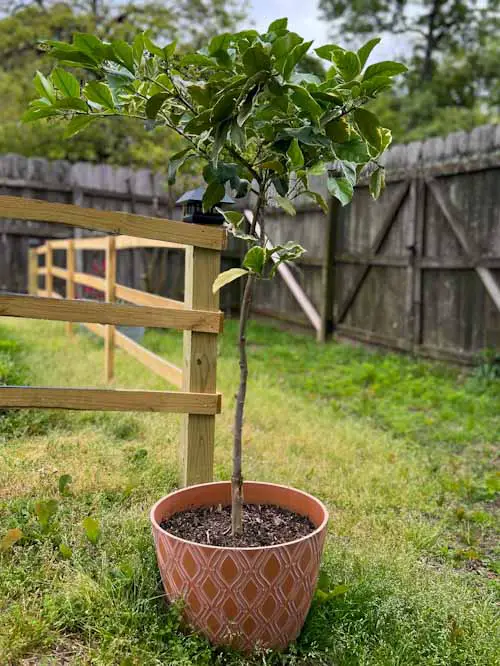
I grow both ‘Improved Meyer’, which is technically a hybrid between a lemon and a tangerine, and ‘Pink Variegated’, which is a beautiful pink-fleshed lemon that’s related to ‘Eureka’. Both trees have produced tons of lemons even when they were young and relatively small.
No matter what type of lemon tree you grow, those grafted onto dwarf rootstock will produce more lemons relative to the size of the tree. Dwarf lemon trees, such as the ones I grow, will produce a full crop when they are still young – just 2 to 3 years old. They also fruit prolifically even when grown in containers.
2. Prune every year.
Lemon trees don’t need as much pruning as many other fruit trees, but moderate annual pruning can go a long way to encourage more fruit. Every year at the end of winter, just before the main flush of blooms in spring, prune away any damaged, diseased, or crossing branches.
Read all about how to prune lemon trees here: A Guide to Pruning Potted Lemon and Lime Trees
You can also lightly thin out any densely growing areas, or tip-prune longer branches. This moderate pruning will encourage a flush of new growth and blooms, which may lead to a larger lemon harvest. The tree will also have less leafy growth to support, which means more energy to put into developing fruit.
Watch me prune my lemon trees in the video below:
3. Fertilize regularly.
Lemon trees are notoriously hungry plants, especially for nitrogen. With other fruits, nitrogen is typically the element that encourages leaves to grow, and too much can inhibit fruit production. But with citrus trees, nitrogen is a crucial part of fruit development, along with phosphorus, potassium, and other micronutrients.
If your lemon tree is producing a disappointing crop, try fertilizing more regularly and with a higher-nitrogen fertilizer. Look for a fertilizer with an NPK ratio of about 5-1-3, or one with two to three times as much nitrogen as the other elements (2-1-1 or 3-1-1).
One easy-to-find fertilizer I frequently use is this Espoma Citrus-tone Citrus and Avocado Food. It has a 5-2-6 NPK ratio, so it includes plenty of nitrogen as well as potassium, which helps enhance lemon size and flavor.
This Fruit Grove article has all the details about when, what, and how to feed your lemon trees: Fertilizing Potted Lemon Trees: Everything you NEED to Know.
4. Water steadily, especially during flowering and fruiting.
Lemon trees need plenty of water to support the developing young fruits. Drought stress could cause flowers or baby lemons to fall off the tree prematurely, decreasing the lemon crop. Providing enough water will also help the lemons to grow larger and juicier.
Learn more: Watering Lemon Trees: How to Get it Just Right
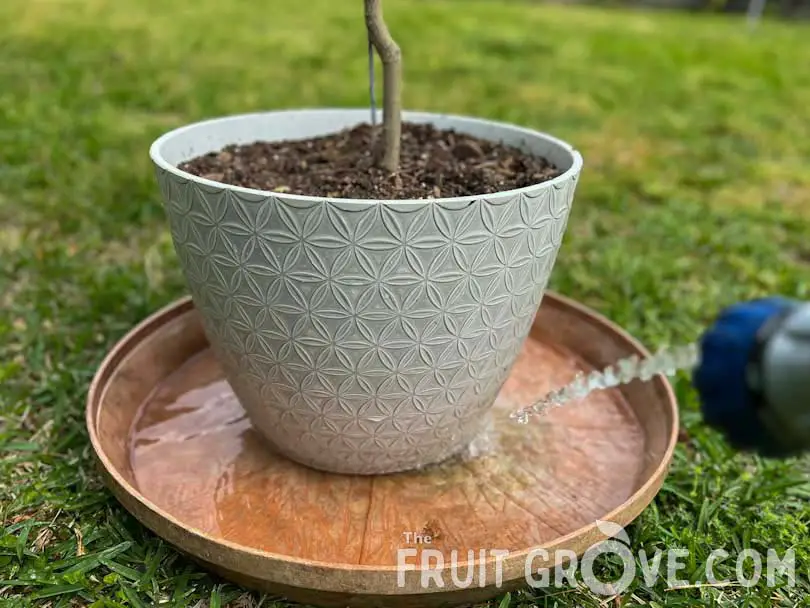
Be careful not to overwater though, as that can also stress the tree. An overwatered lemon tree may develop root root or other issues. Excessive watering will also flush nutrients out of the soil which could lead to nutrient deficiencies (and fruit drop).
Related: Is Your Citrus Tree Overwatered or Underwatered?
Water a lemon tree when the top few inches of soil are dry. You can check this by simply sticking your finger into the soil. Potted lemon trees need to be watered more frequently than those planted in the ground, even daily (or sometimes twice daily, if you live in a hot climate like me!). In-ground trees may need supplemental watering during extended rain-free periods.
5. Provide plenty of sunshine.
One of the most common reasons for a disappointing lemon crop is the lack of sunlight. Lemon trees need at least 6 to 8 hours of bright, direct light every day to support growth and fruit production. A lack of sun will keep fruits from developing fully, and they will take longer to ripen. The flavor of the lemons will be inferior as well.
You can tell your tree isn’t getting enough light if the branches look leggy and stretched out. The leaves will be sparse and spread out along the branches. Instead of being a deep green color, the leaves may look a little pale, and the tree will be stunted overall.
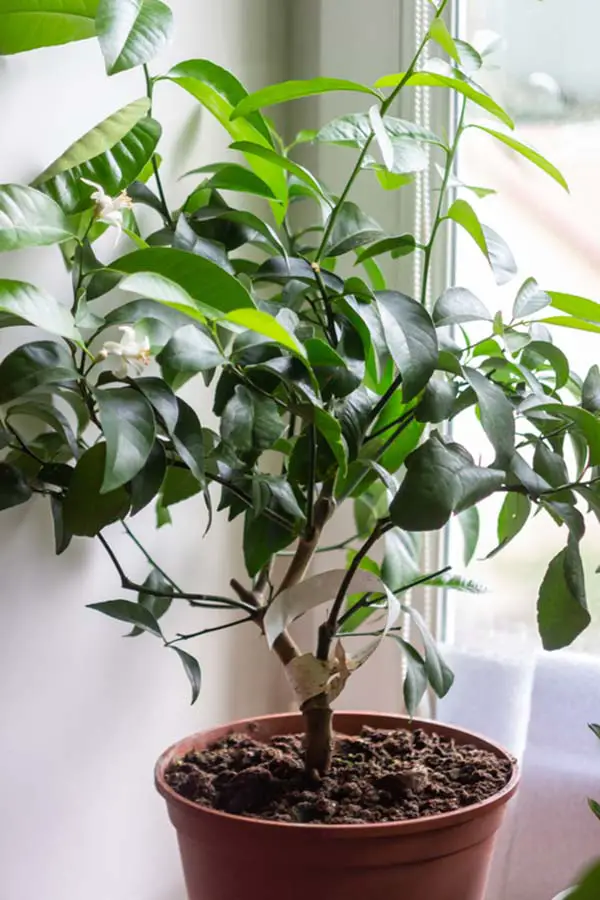
If you are growing a lemon tree indoors, be sure to place it directly in front of a sunny window. The south side of the house tends to have the longest sun exposure. During spring and summer, bring the tree outside so it can experience the sunlight and humidity that it craves.
6. Thin fruit clusters.
This may seem counterintuitive, but thinning out clusters of baby lemons may actually help more lemons to fully develop on the tree. And the remaining lemons will be bigger and better.
Even small lemon trees produce hundreds of blossoms – far more than will actually grow into lemons. Once the blossoms are pollinated, they begin to form tiny fruits. As the baby lemons grow, the tree will naturally drop many of them since it can only support so much fruit.
Once the tiny lemons are about the size of a dime, look for dense clusters on the tree. Gently pinch off some baby lemons so that each cluster is left with no more than 2 or 3 lemons. Also, look down the length of each branch, and pinch off any lemons that are growing too close together. Aim for 4-6 inches between fruits.
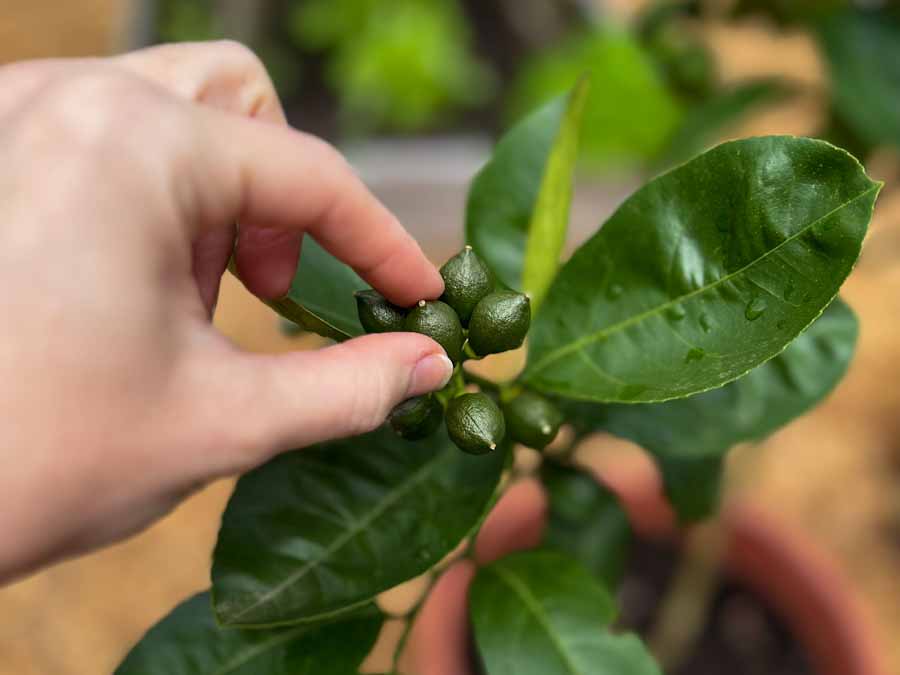
By hand-thinning the remaining lemons, you increase the tree’s ability to support all of the developing fruit. This means more lemons will grow to full maturity, giving you a more robust harvest.
7. Protect from extreme temperatures.
Frost damage is a common reason for a small lemon crop. If there is a late frost in spring as the tree is blossoming, it could kill off most of the blossoms and young fruits. The tree may struggle to recover that season, so the lemon crop will likely be smaller.
Cold temperatures throughout the winter can damage lemon trees and inhibit blossom and fruit production. Most lemon trees only tolerate temperatures to about 32° F. They can be grown in USDA zones 8-11, but even in zones 8 and 9 they will need some winter protection.
The easiest way to protect lemon trees in the winter is to plant them in containers, then move the pots to a sheltered spot (a shed, garage, or indoors) during the cold months. If your tree is planted in the ground, you can use mulch, frost blankets, and warming lights to prevent frost damage.
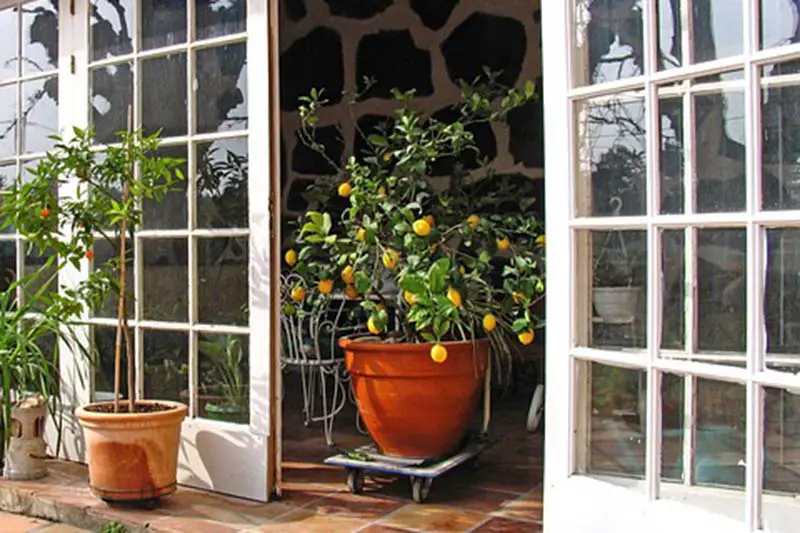
Extreme heat can inhibit fruit growth as well. A lemon tree will slow its growth during summer heat spells. If the heat is prolonged, the tree may drop its fruit as a way to conserve energy. High temperatures can also lead to drought stress, which can also cause fruit drop.
I live in zone 8b, in an area with very hot and humid summers. If you live in a hot climate like me, find a spot for your lemon tree so it experiences some late afternoon shade. Protection from direct sun during the hottest part of the day minimizes stress on the tree.
8. Prevent pest and disease problems.
There are a lot of reasons to keep an eye out for pests and diseases, including the fact that these issues can affect fruit yield. The best way to prevent disease infections and pest infestations is with good overall cultural care (watering, fertilizing, sun, soil, etc.). The less stressed the tree is, the better it is able to withstand problems.
One of the side effects of a bad infestation or infection is fruit drop. If the lemon tree is trying to survive, the first thing it will do is conserve energy by dropping developing fruit. Or, if the fruit stays on the tree, it will often grow smaller and less flavorful.
Check out Lemon Tree Leaves Curling? Here’s What to Do About It and Yellowing Lemon Tree Leaves? Here’s 5 Reasons Why to learn more about how to deal with common lemon tree pests and diseases.
10. Increase pollination.
All of those lemon blossoms will never turn into fruit if they aren’t pollinated. The good news is – if your tree is outdoors – the bees will take care of that for you. Lemon trees are self-fertile, meaning they can be pollinated by flowers on the same tree.
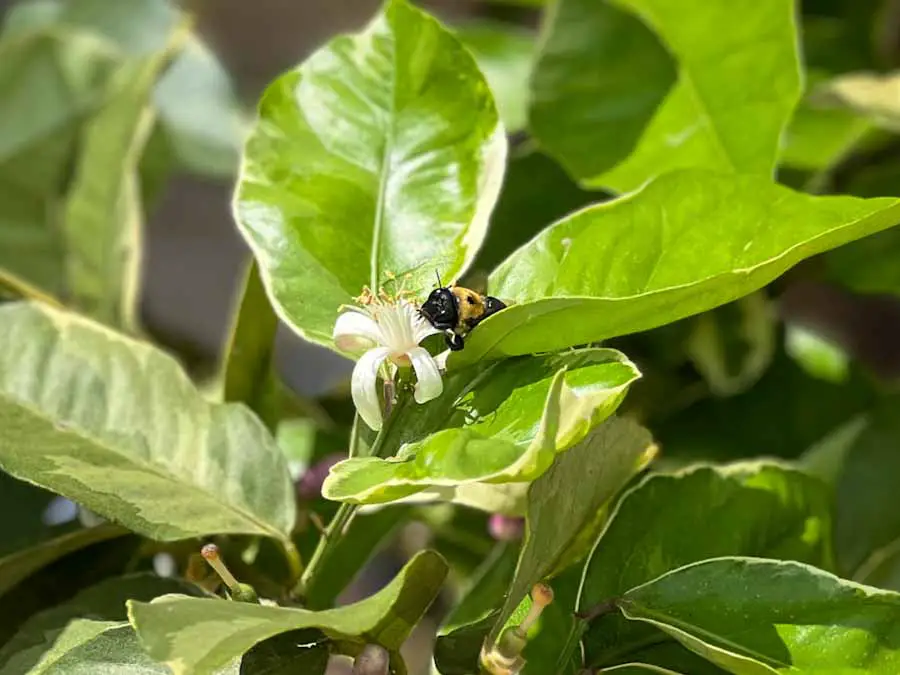
You can plant some bee-friendly flowers and herbs close by to help attract even more pollinators. But I’ve noticed that the bees love the fragrant, pollen-laden lemon flowers no matter what else is nearby.
However, if you grow your lemons indoors, the flowers will need some help with pollination (unless you have bees in your house…). The good news is, pollinating lemon flowers by hand is easy. Just grab a cotton swab or dry paintbrush.
Look for male blossoms with little sacs of yellow pollen at the end of long filaments, collectively called stamen. Gently grab a little of the pollen with the brush or swab, and then transfer it to the sticky stigma of a female flower. The more bulbous stigma is located at the tip of a larger central filament, called a pistil.
Some lemon varieties have flowers with both male and female characteristics. Repeat the hand pollination with as many flowers as you can, then watch as baby lemons form over the next couple of weeks.
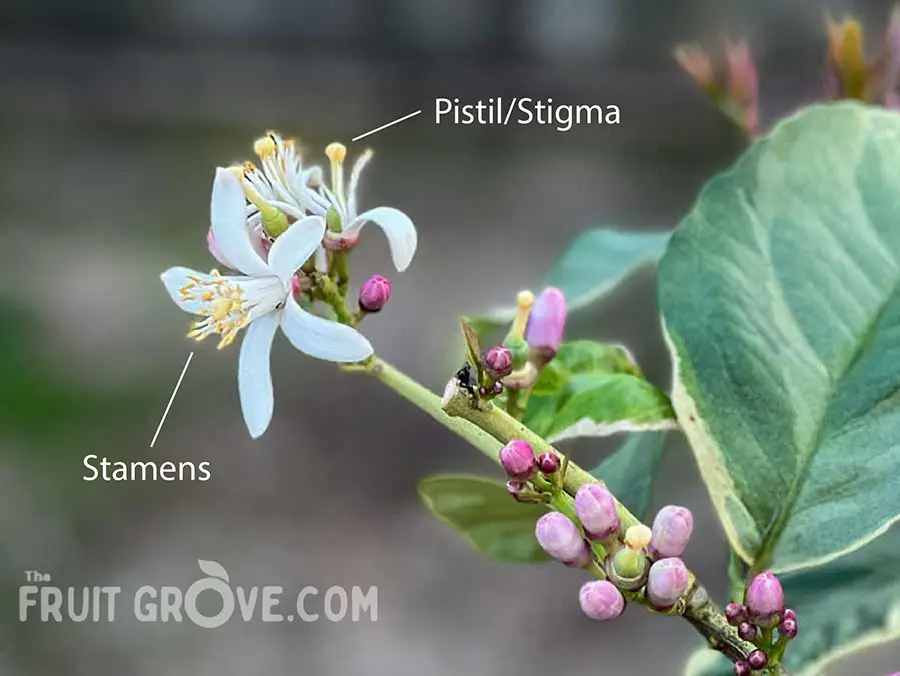
11. Be patient.
Sometimes, if you want a bigger lemon crop, the best thing you can do is wait. If the tree has been neglected, take steps to correct the issues – new soil, a new location, better fertilizing and watering regimens. Then just wait for the tree to recover its vigor. Lemons will soon follow.
If the tree is very young, it may just not be ready to support a full lemon crop. Grafted lemon trees, particularly dwarf varieties, need about 3 years before they’re ready to fruit. But for the first couple of seasons, they may only produce a handful of lemons.
Full-sized lemon trees may need 5-7 years, or more, before fruiting. In either case, once the tree is mature, it will probably provide you with more lemons than you know what to do with.

